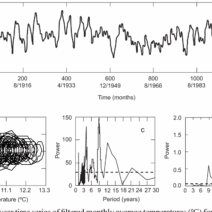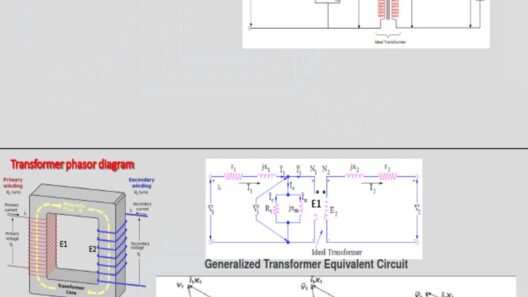When it comes to running, many athletes and recreational joggers alike often seek ways to enhance their performance. A vital aspect of running performance is stamina, which can be bolstered not merely through arduous training but also by conserving energy intelligently. This article aims to elucidate various methods to conserve energy while running, fostering endurance, and ultimately enhancing your overall performance.
Understanding the fundamentals of energy conservation starts with a profound comprehension of biomechanics and the physiological processes involved in running. The body utilizes energy in the form of adenosine triphosphate (ATP), primarily derived from carbohydrates and fats during physical exertion. By optimizing running techniques and incorporating strategic training methodologies, one can efficiently harness energy, prolonging stamina.
Optimize Your Running Form
The architecture of your running mechanics plays a pivotal role in energy conservation. An efficient form minimizes unnecessary movements and conserves energy. Keeping shoulders relaxed and arms in a 90-degree angle allows for smoother motion, while an upright posture prevents excessive slouching that can lead to fatigue. Additionally, a midfoot strike—where the foot lands beneath the body rather than ahead—has been shown to reduce impact forces and enable a more sustainable pace.
Manage Your Breathing
Breath control is essential in energy management during running. Adopting a rhythmic breathing pattern can optimize the oxygen intake necessary for muscle performance. A common technique is the ‘2:2’ pattern, where the runner inhales for two steps and exhales for the next two. Ensuring deep abdominal breathing rather than shallow chest breathing also aids in increasing oxygen supply, thus enhancing endurance.
Incorporate Interval Training
Interval training offers a dual benefit: not only does it boost anaerobic capacity, but it also allows for energy conservation tactics to shine. By alternating between high-intensity bursts and lower-intensity recovery periods, runners can learn to manage their energy expenditure more effectively. This approach trains both the cardiovascular system and muscle fibers, allowing for more sustained efforts during longer runs without succumbing to fatigue too early.
Strategic Fueling Techniques
What you consume before and during your runs significantly impacts energy conservation. A well-planned diet rich in carbohydrates is essential for maximizing glycogen stores. Moreover, incorporating gels, chews, or drinks during long runs can provide a quick energy source. Timing is crucial; consuming easily digestible carbohydrates before you begin running helps stave off depletion, allowing for longer, more enjoyable runs.
Mental Strategy: Pace Management
Pacing is an integral aspect of conserving energy while running. Many runners make the mistake of starting off too swiftly, draining their energy reserves prematurely. A well-calibrated pacing plan, such as utilizing negative splits—where the final portion of a run is faster than the initial segment—can conserve energy while maintaining speed. This strategic mindset allows for a steady rhythm, enabling runners to feel more invigorated in the latter parts of their runs.
Utilize Terrain to Your Advantage
The environment plays a fundamental role in energy expenditure. When running downhill, it may be tempting to sprint; however, maintaining a controlled descent can conserve energy for climbing back up. Additionally, identifying softer surfaces such as grass or dirt trails over hard pavement can reduce the impact on the joints and muscle fatigue, thereby conserving energy over longer excursions.
Implement Cross-Training
Incorporating cross-training into your regimen enhances overall strength and stamina while preventing burnout. Activities like swimming, cycling, or yoga improve muscle endurance and flexibility, translating to more efficient running mechanics. Such diversions not only provide a break from running but also promote better recovery, ultimately boosting stamina and conserving energy during subsequent runs.
Listen to Your Body
A paramount aspect of energy conservation is recognizing when to adjust your running routine. Acknowledging signs of fatigue, adjusting pace, and allowing for ample recovery periods can elude the dreaded plateau in performance. Understanding the body’s cues can help avert overtraining, which can lead to injury and diminished stamina over time. Ensuring sufficient recovery through rest days and proper sleep is just as crucial as training itself.
The Role of Wearable Technology
In today’s technological age, wearable devices provide invaluable data that can enhance energy conservation. GPS watches and heart rate monitors help track performance metrics and create personalized pacing strategies. Knowing your heart rate zones during training not only ensures workouts are effective but facilitates the management of efforts across different terrains and conditions, leading to optimal energy expenditure and improved stamina.
Conclusion
In summary, conserving energy while running is a multifaceted approach that combines biomechanics, nutrition, mental strategies, and cross-training. By implementing these techniques, runners can not only enhance their stamina but also cultivate a more enjoyable running experience. With diligence and thoughtful regulation of effort, runners will find themselves crossing the finish lines with vigor, proving that efficiency and endurance can go hand in hand. Properly applied, these methods allow any runner to maximize their potential while simultaneously minimizing the wear and tear on their bodies. As with all things, consistency and patience are key in the pursuit of endurance. The road to improved stamina is paved with informed choices, and by adopting these practices, runners can unlock new levels of performance.








